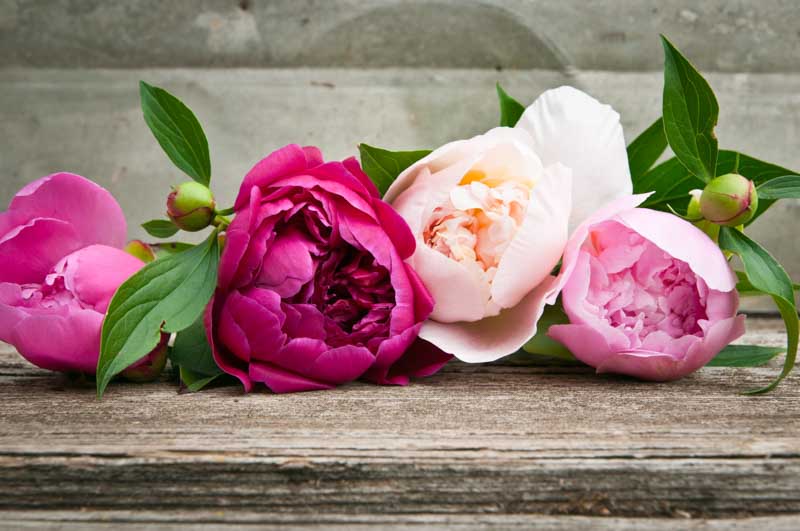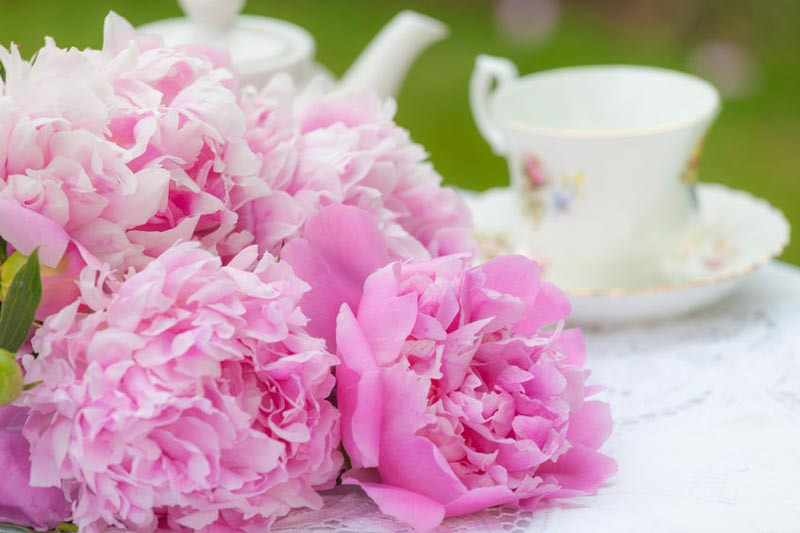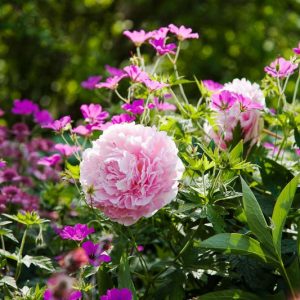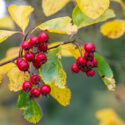Peonies, with their stunning blooms, are not just a gardener's delight but also attract various pests and diseases

The Peony, a beloved perennial in the genus Paeonia, is famed for its large, lush blooms and vibrant colors. Native to Asia, Europe, and North America, peonies come in two main types: herbaceous, which die back each winter, and tree peonies, which have a woody structure.
Their flowers, ranging in shades from pink, red, white, yellow, to coral, are known for their striking beauty and sweet fragrance.
Peonies prefer well-drained soil and full to partial sunlight, thriving in USDA zones 3-9. Long-lived and low maintenance, they are a favorite for gardens and bouquets, symbolizing prosperity, romance, and good fortune
Peonies, with their stunning blooms, are not just a gardener’s delight but also occasionally attract a few pests. These issues range from nibbling insects to sap-sucking pests, each capable of diminishing these plants’ health and aesthetic appeal. Understanding these pest issues is crucial for effective management. Regular monitoring and targeted interventions can mitigate the damage, ensuring that the peonies continue to thrive and enhance gardens with their lush, vibrant flowers.
Description: Ants are social insects, usually small, ranging in color from light brown to black. They live in colonies and are often seen marching in lines. Ants play diverse ecological roles, from aerating soil to spreading seeds, but can become pests when they invade homes or gardens. Ants on peony buds are common and harmless.
Symptoms: In gardens, ant trails and mounds are common signs. Indoors, their presence in kitchens or other areas indicates an infestation. Ants often seek out sweet substances and can be found near food sources or moisture-rich areas, signaling their presence through consistent trails and, in some cases, structural damage.
Treatments: For outdoor control, maintain a clean garden and seal entry points. Natural deterrents include diatomaceous earth and vinegar solutions. Indoors, cleanliness is key, alongside bait traps and sealing entry points. For severe infestations, professional pest control services may be necessary to identify and eradicate the source colony.
Description: Mealybugs are small, sap-sucking insects covered in a white, cottony substance. They typically cluster in large numbers on plant stems, leaves, and sometimes roots. These pests are common in greenhouses and indoor plants but can also affect outdoor plants.
Symptoms: Infestation signs include sticky honeydew secretion, leading to sooty mold growth on plants. Plants may exhibit yellowing leaves, stunted growth, and in severe cases, leaf drop. Mealybugs are visible as tiny white masses resembling cotton wool, often found in leaf axils and other protected areas.
Treatment Indoors: Combat mealybugs by dabbing them with a cotton swab soaked in rubbing alcohol, which dissolves their protective coating. Alternatively, apply insecticidal soap or neem oil to infested areas, ensuring thorough coverage. Repeat weekly until the infestation is controlled, isolating affected plants to prevent spread. Imidacloprid granules put onto the soil will also control mealybugs.
Treatment Outdoors: Remove mealybugs from outdoor plants using a strong water spray or by hand with a cotton swab dipped in rubbing alcohol. For widespread issues, treat plants with neem oil or insecticidal soap. Encourage natural predators like ladybugs or lacewings to aid in control.
Description: Scale insects are small, sap-sucking pests, often resembling bumps on plant stems, leaves, or fruit. They’re known for their protective outer coating, which shields them from predators and environmental factors, making them a resilient adversary for many plant species.
Symptoms: Infested plants show signs like yellowing leaves, stunted growth, and sooty mold development, resulting from the sticky “honeydew” excreted by the insects. Severe infestations may lead to leaf drop, branch dieback, or even plant death if not addressed.
Treatment Indoors: Treat scale insects on indoor plants by lightly scraping these pests with a fingernail. Scales are susceptible to many insecticides, such as insecticidal soap, neem oil, canola oil, or pyrethrins. Apply to infested areas, ensuring thorough leaf coverage. Repeat treatments as needed, and consider isolating affected plants to prevent spread.
Treatment Outdoors: For outdoor plants, manually remove scale insects using a soft brush or cloth soaked in soapy water. Spray affected plants with neem oil or horticultural oil, targeting the undersides of leaves and stems where scales reside. Encourage beneficial insects like ladybugs, lacewings, soldier beetles, and parasitic wasps that prey on scale insects.
Description: Thrips are tiny, slender insects with fringed wings, known for their sap-sucking behavior. They are often found on flowers and leaves, causing damage as they feed. Thrips can be various colors, including black, brown, or yellow, and are typically only a few millimeters long.
Symptoms: Thrips feeding results in stippled, distorted, or silvery leaves and flowers, often accompanied by black fecal spots. Blossoms may be deformed or discolored, and severe infestations can stunt plant growth or reduce yields in vegetable gardens.
Treatment Indoors: Begin by rinsing leaves with water to remove thrips physically. Follow up by spraying the plant with insecticidal soap, ensuring thorough coverage of all leaf surfaces. For plants with flower buds harboring thrips, use a systemic insecticide like spinosad, acetamiprid, or imidacloprid to reach those hidden within. Sticky traps can catch flying adults. Repeat treatments weekly until thrips are eliminated, isolating affected plants to prevent spread.
Treatment Outdoors: Spray outdoor plant foliage with insecticides effective against thrips, such as spinosad, acetamiprid, imidacloprid, cyfluthrin, deltamethrin, or lambda-cyhalothrin. Ensure complete coverage, focusing on flower buds for systemic control. Applying imidacloprid granules to the soil can also provide effective, long-lasting protection. Encourage natural predators like lacewings and ladybugs.
While peonies are generally robust, they can be susceptible to several diseases that can mar their beauty. Fungal infections like Botrytis blight and powdery mildew are common, often manifesting as discolored foliage and damaged blooms. Root rot and viral diseases can also impact their health. Understanding and identifying these disease issues early is key to effective management. Proper care and preventive measures can minimize these problems, ensuring that peonies continue to grace gardens with their stunning, fragrant blooms.
Description: Botrytis Blight of Peony (Botrytis paeoniae), also known as gray mold, is a fungal disease affecting peonies. It thrives in cool, moist environments and is characterized by a gray mold that attacks various parts of the plant, especially during periods of high humidity and in spring.
Symptoms: Symptoms include brown or black spots on leaves, wilting, and rotting of buds and stems, often covered with a gray, fuzzy mold. Affected buds may fail to open, and the disease can lead to a general decline in the plant’s health.
Treatments: Treatment involves removing and destroying affected parts, improving air circulation, and avoiding overhead watering. Fungicides can be applied in early spring as a preventive measure. Regular cleaning of debris around the plants and maintaining good plant health are also essential for controlling the disease.
Description: Peony Blotch, also known as Peony Leaf Spot or Measles, is a fungal disease caused by Cladosporium paeoniae. It primarily affects the leaves of peonies, thriving in cool, moist conditions and diminishing the ornamental value of these popular garden plants.
Symptoms: Symptoms include reddish-brown spots on leaves that evolve into larger, purplish-black blotches. The affected leaves may exhibit a distorted appearance and can prematurely drop. In severe cases, the disease can cause an overall decline in plant health and vigor.
Treatments: Treatment involves improving air circulation, reducing leaf wetness through proper watering practices, and removing affected foliage to prevent spread. In cases of severe infection, fungicidal sprays appropriate for Cladosporium paeoniae can be used, following label instructions. Good garden sanitation, including fall cleanup of plant debris, is crucial for disease management.
Description: Powdery mildew is a common fungal disease affecting a wide range of plants. It manifests as white or grayish powdery spots, primarily on the upper surfaces of leaves and stems. Though it can mar a plant’s appearance, it’s often more of a cosmetic issue than a fatal one.
Symptoms: Powdery white or grayish-white fungal growth on the leaves, stems, and sometimes fruit and flowers. Distorted or stunted growth, yellowing or curling of leaves, stunted or reduced fruit or flower production, reduced plant vigor.
Treatments: Increase air circulation, reduce overhead watering, and prune affected areas. Apply fungicides or homemade solutions like baking soda sprays. Neem oil and horticultural oils can also suppress the spread. Ensure good garden hygiene to prevent recurrence.
Description: Root rot is a destructive condition caused by various soil-borne fungi or bacteria. It thrives in poorly drained soils, attacking the roots of many plant types. This condition deprives the plant of nutrients and water, leading to systemic failure and often plant death if not addressed.
Symptoms: Above ground, plants with root rot exhibit wilting, yellowing leaves, stunted growth, and branch dieback. Below ground, roots may appear brown, soft, and mushy instead of firm and white. The plant’s overall vigor is noticeably reduced, and in advanced stages, the plant may collapse or die.
Treatments: Prevention is key: ensure well-draining soil and avoid overwatering. Remove affected plants and surrounding soil. Apply fungicides labeled for root rot control when replanting, following instructions meticulously. Enhancing soil with organic matter can improve drainage. Reducing water and improving soil aeration in established plants may help limit disease progression.
Description: Verticillium wilt is a soil-borne fungal disease affecting a wide range of plants. It invades the roots, spreading through the plant’s vascular system, hindering water and nutrient transport. The fungi responsible, primarily Verticillium dahliae, can persist in the soil for years, making management challenging.
Symptoms: Infected plants exhibit wilted, yellowing, and stunted leaves, often on one side of the plant or a single branch. Vascular discoloration may be visible when stems are cut open. Over time, the affected parts may die back, and the plant’s overall health and productivity are significantly reduced.
Treatments: There is no cure for Verticillium wilt; management focuses on prevention and mitigation. Planting resistant varieties, improving soil drainage, and practicing crop rotation can reduce the risk of infection. Infected plant material should be removed and destroyed, not composted. Soil fumigation might be considered for high-value crops, following environmental guidelines and recommendations from agricultural extensions.
Description: Crown gall is a bacterial disease caused by Agrobacterium tumefaciens. It primarily affects the roots and lower stems of plants, forming tumor-like swellings (galls). This disease can afflict a wide range of plant species, both woody and herbaceous, impacting their growth and vigor.
Symptoms: Symptoms include round, woody galls at the crown of the plant, where the stem meets the roots, or on the roots themselves. These galls can vary in size and hinder the plant’s nutrient and water uptake, leading to stunted growth, reduced yield, and in severe cases, plant death.
Treatments: There is no cure for crown gall once a plant is infected. Prevention is key, involving sterilizing pruning tools, and avoiding injury to plants. Infected plants should be removed and destroyed to prevent the spread. Soil where infected plants were grown should be avoided for future planting. Soil solarization might be effective. Biological control agents are available that can be applied to wounds to prevent infection.
Description: White mold, caused by the fungus Sclerotinia sclerotiorum, is a common plant disease. It manifests as a white, fluffy fungal growth on plant tissues, often in cool, moist conditions. This pathogen affects a wide range of plants, particularly in dense plantings with poor air circulation.
Symptoms: Infected plants exhibit wilted, water-soaked lesions on stems, leading to a general collapse. As the disease progresses, a white cottony growth appears, sometimes with hard, black sclerotia. Affected plants may show stunted growth, yellowing leaves, and premature death.
Treatments: To manage white mold, remove and destroy infected plant material. Improve air circulation by spacing plants properly and pruning dense foliage. Avoid overhead watering to keep foliage dry. In areas with a history of white mold, consider applying fungicides as a preventive measure and rotate crops with non-susceptible plants.
Description: Crown rot, typically caused by soil-borne fungi like Phytophthora or Sclerotium, is a destructive disease affecting the base of a plant’s stem or crown. It thrives in wet, poorly drained conditions and can affect a variety of plants, especially perennials and shrubs.
Symptoms: Symptoms include soft, rotted areas at the plant’s base, often accompanied by wilting, yellowing, and collapse of the foliage. The crown may turn black or brown, and the rot can spread upward into the stems or downward into the roots, eventually killing the plant.
Treatments: To manage crown rot, improve soil drainage and avoid overwatering. Infected plants should be removed and destroyed. Fungicides can be applied as a preventive measure, especially in areas known to have problems with crown rot. Avoid planting susceptible species in the affected area, and consider using raised beds to improve drainage. Soil solarization can also help reduce the presence of pathogens in the soil.
Abiotic problems in peonies refer to issues caused by non-living factors such as environmental stresses, cultural mismanagement, or physical damage rather than pests or diseases.
| Cause | Symptom | Treatment |
| Improper Planting Depth | Lack of flowering. | Replant peonies at the correct depth, with the buds no more than 2 inches below the soil surface for herbaceous peonies. |
| Water Stress | Overwatering leads to yellowing leaves and root rot, while underwatering causes wilting and poor blooms. | Ensure well-draining soil and adjust watering to maintain consistent moisture without waterlogging. |
Nutrient Deficiencies |
Yellowing leaves, stunted growth, or lack of blooms. | Test soil and use balanced fertilizers to correct nutrient deficiencies. Avoid over-fertilizing. |
Insufficient Sunlight |
Fewer flowers and leggy growth. | If possible, relocate peonies to a sunnier spot. They require at least six hours of sunlight daily. |
Temperature Stress |
Frost damage in spring or heat stress in summer. | Protect emerging shoots from late frosts with mulch or frost cloth. During extreme heat, ensure adequate watering. |
Soil pH Imbalance |
Poor growth and flowering. |
Test soil pH and adjust as needed. Peonies prefer a neutral to slightly acidic pH. |
Chemical Damage |
Foliage burn or discoloration. | Avoid spraying herbicides and pesticides close to peonies. If damage occurs, rinse plants with water and avoid further chemical exposure. |
Regular monitoring, proper cultural practices, and creating an optimal growing environment are key to preventing and treating abiotic problems in peonies.

When peonies fail to bloom, several factors could be at play:

What Insect is Eating My Peonies? Common insect pests that may eat peony plants include Japanese beetles, aphids, and thrips. These insects can chew on leaves and flowers, causing noticeable damage.
What is the Common Disease of Peonies?
The most common disease affecting peonies is Botrytis blight, also known as peony wilt. It’s a fungal infection that can affect leaves, stems, and buds.
What Does Peony Blight Look Like?
Peony blight appears as brown or black spots on leaves and stems, wilting, and rotting of buds. The affected parts may look water-soaked or have a fuzzy gray mold.
What Does a Diseased Peony Look Like? A diseased peony may have discolored, spotted, or wilted leaves, rotted stems, and buds that fail to open. Signs vary depending on the specific disease.
Learn how to fill your garden with continuously blooming peonies throughout the season to up to 6 weeks!
The Peony, a member of the Paeoniaceae family, is cherished for its large, fragrant blooms in shades of pink, red, white, and yellow. Native to Asia, Europe, and Western North America, peonies are long-lived perennials or shrubs, thriving in USDA zones 3-8. Their lush foliage and striking flowers make them garden favorites, ideal for borders, cut arrangements, and special occasions.
Peony flowers, though with a brief blooming season, are a boon for pollinators. Their vibrant, fragrant blooms provide essential nectar and pollen, attracting bees, butterflies, and other beneficial insects. While they bloom, peonies offer a spectacular display in gardens, contributing to local biodiversity and the health of pollinator populations.
Here is a selection of peonies that do not require staking and could become the highlight of your spring garden!
Here is a selection of exceptional peonies that could become the highlight of your spring garden!
Mother Nature has been remarkably generous with the Paeonia genus as many peonies are also delightfully fragrant, adding one more positive dimension to your enjoyment of growing this fabulous garden perennial!
Here is a selection of exceptional peonies that could become the highlight of your spring garden!
To help you plan your late spring or early summer garden and facilitate your selection of peony varieties, here is a list of yellow peony cultivars organized by blooming season
To help you plan your late spring or early summer garden and facilitate your selection of peony varieties, here is a list of white peony cultivars organized by blooming season
To help you plan your late spring or early summer garden and facilitate your selection of peony varieties, here is a list of pink peony cultivars organized by blooming season
To help you plan your late spring or early summer garden and facilitate your selection of peony varieties, here is a list of red peony cultivars organized by blooming season
Among the most exciting peonies are the unique coral-colored peonies. Aside from the beauty of their blooms, these peony hybrids do not require staking. They make excellent cut flowers and create breathtaking combinations with other perennials in the spring garden.
















Create a membership account to save your garden designs and to view them on any device.
Becoming a contributing member of Gardenia is easy and can be done in just a few minutes. If you provide us with your name, email address and the payment of a modest $25 annual membership fee, you will become a full member, enabling you to design and save up to 25 of your garden design ideas.
Join now and start creating your dream garden!
Create a membership account to save your garden designs and to view them on any device.
Becoming a contributing member of Gardenia is easy and can be done in just a few minutes. If you provide us with your name, email address and the payment of a modest $25 annual membership fee, you will become a full member, enabling you to design and save up to 25 of your garden design ideas.
Join now and start creating your dream garden!